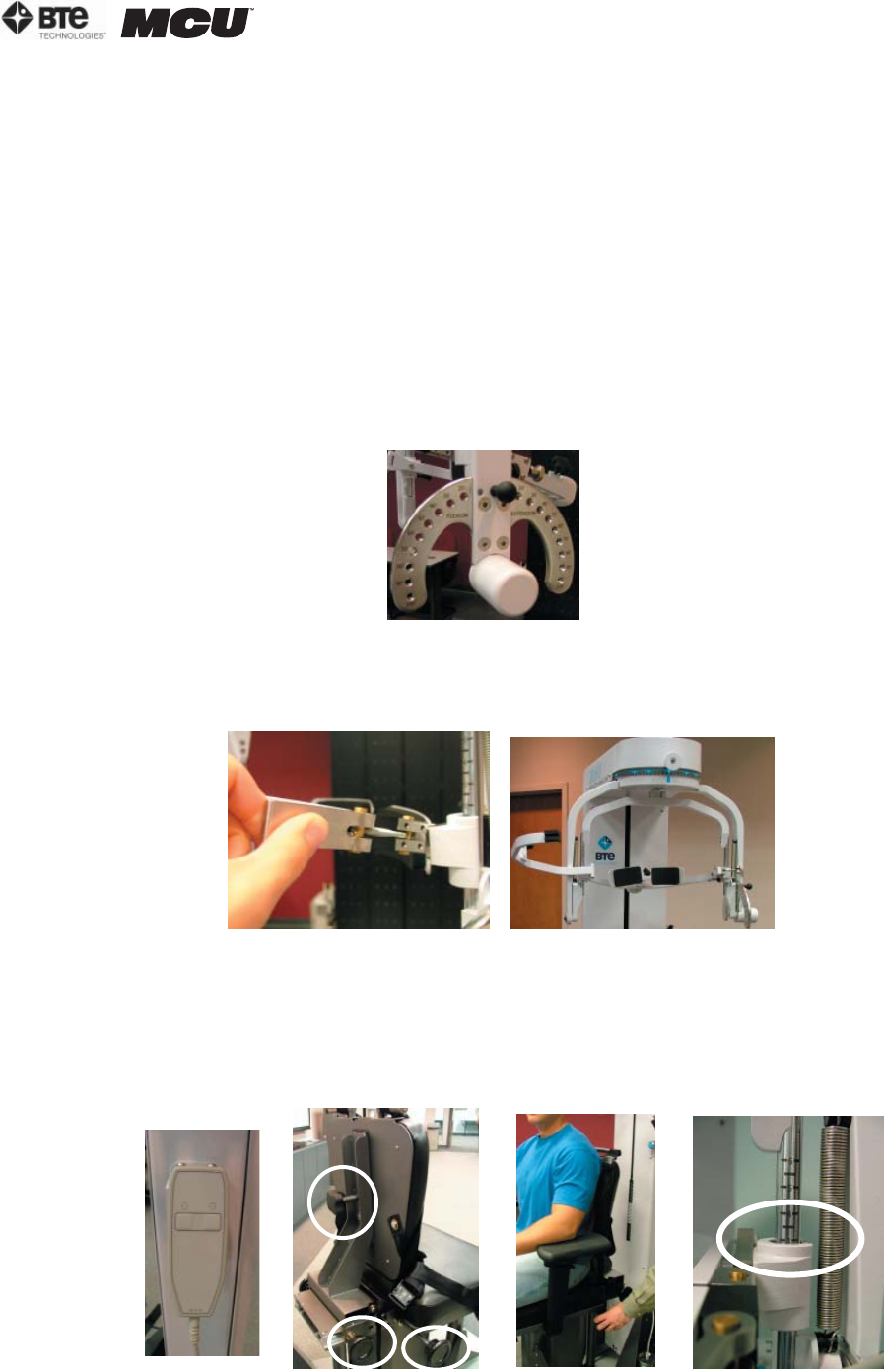User's Manual Part 1

section 06
page
7
40040005 rev. 000
N. Parameters to be Measured (Heading Labels) - Type in the parameters that will be mea-
sured
Once the screen has been closed, the protocol is saved under the assigned test name with
the new specifications.
III. CERVICAL RANGE OF MOTION (ROM) PROTOCOLS
A. POSITIONING THE PATIENT FOR A CERVICAL ROM PROTOCOL
In order to prepare for cervical range of motion testing, it is extremely important to under-
stand how to properly position the patient; this will prevent any injury during testing.
The following 7 steps are required prior to each type of ROM testing. Outlined after these 7
initial steps are the subsequent steps, which vary according to the test being performed.
Step 1. Insert the range-of-motion stop pin in the zero degree position on the halo (Figure
6-5).
Step 2. Lower the chair all the way down to its lowest position.
Step 3. Using the latch on the right side, open the halo (Figure 6-6).
Step 4. Ask the patient to sit in the chair.
Step 5. Adjust the height of the seat, the position of the seat, the position of the back
of the chair, the height of the back of the chair, and the arm rests to accommodate the
patient’s size, height, and posture. Set the halo height to 3 as a starting position (Figure
6-7).
Figure 6-5. Insert
ROM Stop
Figure 6-6. Open Halo
Figure 6-7. Seat Adjustments










